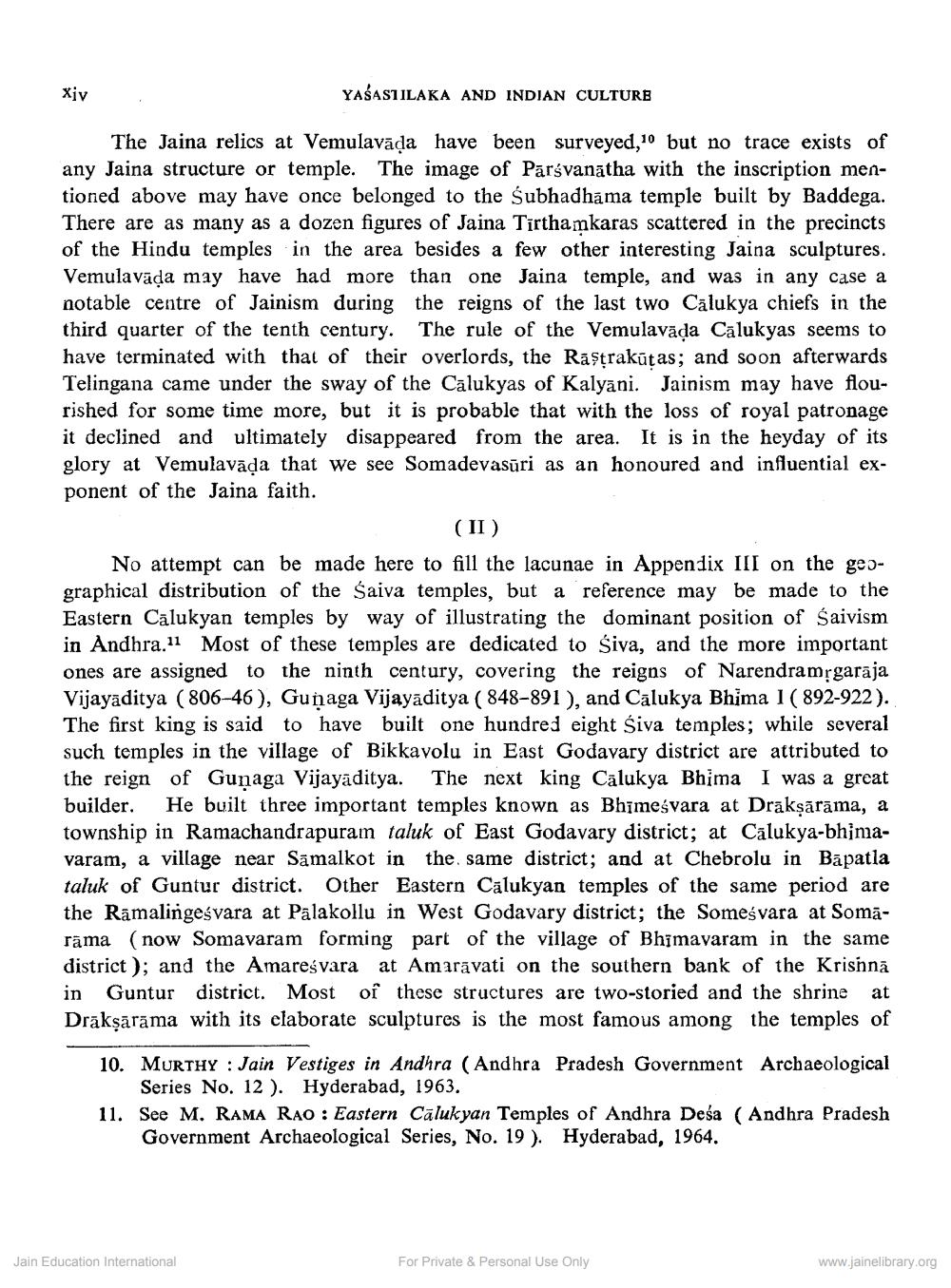________________
Xiv
YASASTILAKA AND INDIAN CULTURE
The Jaina relics at Vemulavāda have been surveyed, 10 but no trace exists of any Jaina structure or temple. The image of Pārsvanātha with the inscription mentioned above may have once belonged to the Subhadhāma temple built by Baddega. There are as many as a dozen figures of Jaina Tirthamkaras scattered in the precincts of the Hindu temples in the area besides a few other interesting Jaina sculptures. Vemulavāda may have had more than one Jaina temple, and was in any case a notable centre of Jainism during the reigns of the last two Calukya chiefs in the third quarter of the tenth century. The rule of the Vemulavāda Cālukyas seems to have terminated with that of their overlords, the Raştrakūtas; and soon afterwards Telingana came under the sway of the Cālukyas of Kalyani. Jainism may have flourished for some time more, but it is probable that with the loss of royal patronage it declined and ultimately disappeared from the area. It is in the heyday of its glory at Vemulavāda that we see Somadevasūri as an honoured and influential exponent of the Jaina faith.
( II )
No attempt can be made here to fill the lacunae in Appendix III on the geographical distribution of the Śaiva temples, but a reference may be made to the Eastern Calukyan temples by way of illustrating the dominant position of saivism in Andhra.11 Most of these temples are dedicated to Śiva, and the more important ones are assigned to the ninth century, covering the reigns of Narendramsgaraja Vijayaditya ( 806-46), Gunaga Vijayaditya ( 848-891 ), and Cālukya Bhima I ( 892-922). The first king is said to have built one hundred eight Śiva temples; while several such temples in the village of Bikkavolu in East Godavary district are attributed to the reign of Gunaga Vijayaditya. The next king Cālukya Bhima I was a great builder. He built three important temples known as Bhīmesvara at Drakṣārāma, a township in Ramachandrapuram taluk of East Godavary district; at Cālukya-bhimavaram, a village near Samalkot in the same district; and at Chebrolu in Bāpatla taluk of Guntur district. Other Eastern Calukyan temples of the same period are the Ramalingeśvara at Palakollu in West Godavary district; the Someśvara at Somarāma (now Somavaram forming part of the village of Bhimavaram in the same district); and the Amareśvara at Amaravati on the southern bank of the Krishna in Guntur district. Most of these structures are two-storied and the shrine at Drākṣārāma with its elaborate sculptures is the most famous among the temples of
10. MURTHY : Jain Vestiges in Andhra (Andhra Pradesh Government Archaeological
Series No. 12). Hyderabad, 1963. 11. See M. RAMA RAO : Eastern Cālukyan Temples of Andhra Desa (Andhra Pradesh
Government Archaeological Series, No. 19). Hyderabad, 1964.
Jain Education International
For Private & Personal Use Only
www.jainelibrary.org




